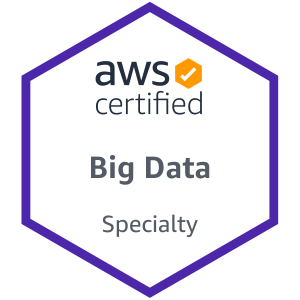Kevin Welter
IT-Architektur, Softwareentwicklung und DevOps.
Aktueller Vortrag: The Great Resignation – Wie du Mitarbeiter trotz Fachkräftemangel halten kannst
In Deutschland fehlen über 100.000 Fachkräfte in der IT und jeden Tag kündigen hoch qualifizierte ITler und verlassen ihr Unternehmen. Wie passt das zusammen? Warum schaffen es Unternehmen scheinbar nicht, ein Umfeld zu erschaffen, in dem Mitarbeitende gerne arbeiten?
Die Antwort ist mehrdimensional. Für ITler ist es unter anderem die Komplexität deiner IT‑Wertschöpfungskette.
„Historisch gewachsen“, „zu viele technische Schulden“ oder „nicht mehr wartbar“, höre ich immer wieder von Kunden und Kollegen. Dabei kann IT einfach sein, wenn Klarheit herrscht. Doch ITler müssen heute oftmals 100te von Tools gleichzeitig beherrschen. Die Einarbeitungszeiten liegt bei mehreren Monaten und es dauert Jahre, bis der Verlust eines Experten wieder ausgeglichen ist. Das kostet Zeit, Geld und erzeugt weiteren Stress bei den Mitarbeitern.
Unter dem Deckmantel von „New Work“, „Agilität“, „Change“ oder „Digitalisierung“ wurden in den letzten Jahrzehnten viele Aktivitäten durchgeführt, deren Ergebnis und übergeordnetes Ziel vollkommen unklar sind. Auf die Frage nach Messbarkeit antworten die agilen Gurus: „Wir sind agil und können nicht so weit planen.“
Die Ziellosigkeit spiegelt sich in hunderten Unternehmen wider, die in ihrer agilen Transformation feststecken und damit das Gegenteil von dem erreicht haben, was ursprünglich geplant war. Weniger, statt mehr Agilität. Langsamere Softwareentwicklung, statt gesteigerte Time2Market. Frustrierte Mitarbeitende, statt performanter Unternehmenskultur.
Wie können Unternehmen die Herausforderungen meistern? Es beginnt damit, die richtigen Mitarbeiter zu finden und zu binden.
Ein individuell gestaltetes, hybrides Arbeitsmodell ist ein Muss!
Jeder zweite ITler wünscht sich mehr Work-Life-Balance und legt hohen Wert auf seine Mental Health.

Hallo! Mein Name ist Kevin Welter
Ich liebe es, wenn die Individualität von Menschen auf Gemeinschaft trifft. Mein Körper ist zu 25 Prozent tätowiert, ich mache Yoga, meditiere und fahre mit Freunden aus der ganzen Welt auf dem Spinning Bike. Seitdem mein Sohn im Juni 2022 auf die Welt gekommen ist, hat sich mein Leben im positiven Sinne mal wieder verändert.
Vor meinem Informatik-Studium habe ich eine Ausbildung zum Fachinformatiker gemacht und weiß daher das Handwerk der IT zu schätzen.
Ich liebe es, mit anzupacken, und bin kein klassischer Berater. Ich bin nahbar und weiß die Individualität jedes Unternehmens zu schätzen. Es wird keine 08/15-On-size-fits-all-Lösung bei uns geben. Und das schätzen die Kunden in besonderem Maße.
Ich verbinde auf einzigartige Weise tiefes technologisches Wissen mit der Fähigkeit, es zielgruppengerecht zu kommunizieren. Ich verstehe und vereinfache komplexe Strukturen und Techniken entlang der IT-Wertschöpfungskette für Konzerne, damit die Mitarbeitenden Zeit für die Dinge haben, die wirklich wichtig sind.
Seit 8 Jahren berate ich mit hochgekrempelten Ärmeln Unternehmen. Seitdem haben Millionen Endnutzen Prozesse genutzt, die ich gestalten und umsetzen durfte.
Referenzen











Wir leben in einer komplexen Welt, die sich rasant verändert und in der Technologie allgegenwärtig ist.
Als NLP-Master und studierter Informatiker mache ich Digitalisierung einfach.
Der Unternehmer Kevin Welter
Gemeinsam mit Fabian Schaub habe ich am 03.12.2018 die HumanITy GmbH gegründet. Wir helfen Unternehmen in der Softwareentwicklung dabei, ihre Time2Market zu verbessern, damit Kunden und Qualität profitieren.
Wir haben keinen 08/15-Pitch, in dem wir dir unser Produkt oder die Zusammenarbeit verkaufen. Das wäre unseriös und widerspricht unseren Werten. Wir kennen dein individuelles Kernproblem noch nicht und deshalb kennen wir auch die Lösung noch nicht.
Die Erfahrung zeigt jedoch: Die meisten Probleme haben wir schon mal bei einem Kunden gelöst.
Fabian und ich sind offene Typen, in den meisten Fällen duzen wir höflich, gleichzeitig sind wir respektvoll, akzeptieren auch den Wunsch nach einer Sie Ansprache. Der Mensch steht bei uns schon immer im Mittelpunkt und wir nehmen uns gerne auch Zeit für dich und dein Unternehmen.
Bevor wir zusammenarbeiten, möchten wir dich kennenlernen, und dafür bieten wir regelmäßig verschiedene Möglichkeiten. Das kann ein Business-Frühstück vor Ort, ein Online-Impulsvortrag oder eine Tagesveranstaltung sein. Die aktuellen Informationen dazu findest du immer auf unserer Website www.humanity-it.com oder auf Anfrage unter humanity@humanity-it.com.
Schreib uns einfach!









In Zeiten des Fachkräftemangels ist es notwendig, Menschen durch die richtigen Technologien und Prozesse zu entlasten!

Der Redner Kevin Welter
Seit 2022 teile ich mein Wissen auf Bühnen durch Vorträge zum Thema „The Great Resignation“, Fachkräftemangel in der IT und Digitalisierung. Wenn du Interesse hast mich als Redner zu buchen, schreib mir einfach an humanity@humanity-it.com eine kurze E-Mail und wir vereinbaren ein Telefonat.
Digitalisierung darf einfach sein und beginnt immer beim Mensch.


Vorträge
The Great Resignation:
Wie du Mitarbeiter trotz Fachkräftemangel halten kannst
In Deutschland fehlen über 100.000 Fachkräfte in der IT und jeden Tag kündigen hoch qualifizierte ITler und verlassen ihr Unternehmen. Der Wunsch nach mehr Work-Life-Balance und mentaler Gesundheit wir immer größer.
In diesem Vortrag geht es darum, wie sich Unternehmen aufstellen sollten, um Mitarbeiter anzuziehen.
Die Prozess Aversion:
Warum wir sie trotzdem brauchen und wie sie das Unternehmen erfolgreicher machen
„Prozesse? Boah nee… die machen uns nur langsam!“
Die Entwicklung zu mehr Agilität und selbstorganisierten Teams führt zur Ablehnung von allem „Alten“. Doch Prozesse sind nicht nur ein notwendiges Übel, sondern können richtig eingesetzt zu mehr Erfolg führen.
In diesem Vortrag geht es darum, wie wir zu Gestaltern von Prozessen werden, die uns unterstützen und die Arbeit vereinfachen.
Das Tool Chaos:
Wie du dich im heutigen Technologie Jungle zurechtfindest
Wie lange dauert es bei dir einen neuen Mitarbeiter einzuarbeiten? In einem komplexen Umfeld dauert das gerne mal ein halbes Jahr. Das muss nicht sein!
In diesem Vortrag geht es über die wachsende Flut an Tools und wie wir den Technologie Jungle lichten können.




